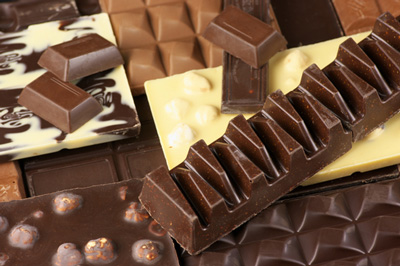Chocolate bars come top in European survey
- Like
- Digg
- Del
- Tumblr
- VKontakte
- Buffer
- Love This
- Odnoklassniki
- Meneame
- Blogger
- Amazon
- Yahoo Mail
- Gmail
- AOL
- Newsvine
- HackerNews
- Evernote
- MySpace
- Mail.ru
- Viadeo
- Line
- Comments
- Yummly
- SMS
- Viber
- Telegram
- Subscribe
- Skype
- Facebook Messenger
- Kakao
- LiveJournal
- Yammer
- Edgar
- Fintel
- Mix
- Instapaper
- Copy Link
Posted: 1 February 2016 | Victoria White | No comments yet
In the nine countries studied by Nielsen, chocolate bars are the top sellers among all of the product categories in the sweets sector…


Chocolate is one of the top themes at ISM, the world’s largest trade fair for sweets and snacks.


In the run-up to the international industry get-together, Sweets Global Network commissioned Nielsen to find out more about chocolate consumption in Europe. In the nine countries studied by Nielsen (Belgium, Germany, France, Great Britain, Italy, the Netherlands, Russia, Switzerland and Spain) chocolate bars are the top sellers among all of the product categories in the sweets sector. From the beginning of November 2014 until the end of October 2015, according to the survey, the consumers in these nine countries spent 6.541 billion Euros on bars of chocolate – almost 5 percent more than in the same period of the previous year.
According to the survey, almost all countries share a preference for “pure” chocolate without further ingredients or fillings. With a 44.4 percent share of the volume, it ranks first in the list of Europe’s most popular type of chocolate. In Italy and Spain the share is indeed over 60 percent. The majority of the French and the Dutch also prefer the simple variant. Overall, milk chocolate is by far the most popular flavour. Two thirds of all bars of chocolate sold in Europe are milk chocolate (except for in Great Britain).
Yet, in individual countries types of chocolate with a wide range of ingredients have made it onto the favourites list of the chocolate consumers: For example, in Spain chocolate with almonds is the best seller, in France and Germany after pure chocolate, hazelnut chocolate is the most popular sort. Overall, chocolate with added ingredients accounts for a 29.6 percent share of the overall chocolate sales European-wide. However, this is a declining trend: The high increases in the raw material prices due to poor harvests, in particular in the case of hazelnuts, had a strong impact on the end consumer prices too (up 12 percent). The survey found that the Brits are very unique in terms of their preferences in chocolate. Here, in addition to pure milk chocolate, bars containing caramel, fruit & nut, whole nuts as well as peppermint are high up on the popularity scale. Dark and white chocolate on the other hand only plays a minor role.
Dark chocolate sales stable but white chocolate segment declining
Overall, after simple chocolate, dark chocolate takes second place in the consumer rankings European-wide (excl. Great Britain). Its share is 27.5 percent and in spite of significant price increases, it has hardly experienced any declines in sales – and is thus showing an upward trend in the share of the volume. Dark chocolate is experiencing particularly strong growth rates in Spain where it has a 35 percent share of the total volume of chocolate bars. The same also applies for France, where the highest shares of dark chocolate are recorded European-wide (48.5 percent), as well as for Italy (39.2 percent) and Belgium (34.2 percent). The share is much lower in the remaining countries, Germany particularly trails far behind its European neighbours with a share of 13.2 percent. Yet, the demand for dark chocolate is growing throughout the whole of Europe at a dynamic rate – especially in the countries of comparably minor importance – in terms of percentages. Without doubt, the increased popularity of dark chocolate is related to the increased awarness for health in Europe.
The number of fans of white chocolate in Europe is on the other hand limited. With a share of 5.3 percent of the total chocolate sales, white chocolate that is made purely using cocoa butter is a nonentity. Although white chocolate sales experienced double-digit growth in the Netherlands last year for instance, in all other countries the segment is declining.




